Categories
- animatronics (12)
- apple (11)
- arduino (179)
- art (41)
- articles (121)
- artificial intelligence (11)
- automation (421)
- avr (205)
- bitcoin (3)
- breadboard (9)
- cameras (57)
- cars (26)
- cell phones (28)
- clothing mods (21)
- console mods (26)
- dangerous (94)
- desktop mods (24)
- embedded (5)
- flying things (54)
- fpga (22)
- gaming creations (108)
- interface (225)
- internet (17)
- laptop mods (6)
- lasers (22)
- linux (7)
- magnetic (3)
- medical (12)
- microcontrollers (51)
- misc projects (152)
- msp (12)
- music (124)
- pic (90)
- projects (23)
- pyroedu (76)
- raspberry pi (26)
- robots (312)
- security (36)
- sensors (307)
- software (200)
- solar (19)
- stamp (9)
- tools (149)
- tutorials (98)
- Uncategorized (45)
- usb (44)
- wireless (256)
Sponsors

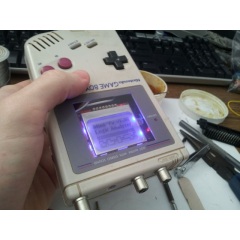
Posted April 27, 2014 by Chris
"Here is one of my favorite projects! This was a simple Atmega microcontroller based logic Analyzer which I redesigned around very strict limitations. The limitations were that I wanted it to fit inside of a nintendo gameboy, run on 4x AA batteries like the gameboy and use the battery contacts, battery compartment, power switch and screen location from the gameboy itself."
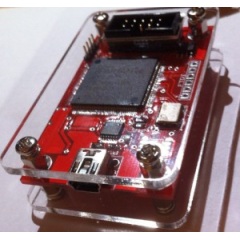
Posted April 16, 2014 by Chris
"A FPGA based design with a soft CPU and USB device interface implemented in Verilog. A small USB stack implements a virtual serial port over USB, but could be extended to support other class drivers such as Audio or HID. This board is form factor compatible with the Bus Pirate v3.5 case"

Posted March 24, 2014 by Chris
"Designed and built during October 2000, this was my first ever microcontroller based project. This one was inspired by an Edmund Scientific instruments catalog. I didn’t see anything like this in that catalog but there were a lot of nice, year 2000 modern multipole cable testers, that made me think and imagine what would be the simplest possible network cable tester that I could quickly build."
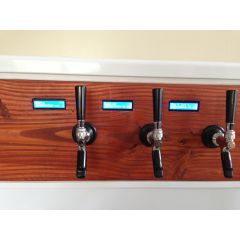
Posted January 24, 2014 by Chris
"So I decided it was time to build a kegerator…More importantly, because I’m a nerd and I’ve never worked with an Arduino I decided it would be fun to play with one. I ended up with an Arduino controlling an LCD for each of the 3 taps I installed, displaying what beer is on tap and how much beer is left in the keg."

Posted October 23, 2013 by Chris
"The project consists of both a custom hardware front-end for data acquisition and an Android application for visualizing the collected data samples to the user. Data is transferred over USB to the Beagleboard running Android, and then plotted on an external screen."
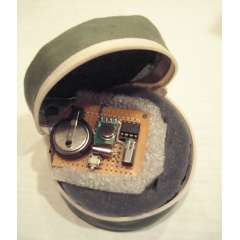
Posted September 11, 2013 by Chris
“Goals: [1] Create a wireless device that sends data from a simple tilt switch. [2] Use a PC to capture, analyze, and detect shaking mosion…..Method: Place a simple tilt switch on a wireless RF board (PIC12F675). Receive the RF data onto a USB PIC (PIC18F2550). Transmit the data to a laptop using USB serial port emulation (PBP code). Analyze the data using Processing, identify and visualize shake-motion.”

Posted August 9, 2013 by Chris
“The FabISP is an in-system programmer for AVR microcontrollers, designed for production within a FabLab. That is, it allows you to program the microcontrollers on other boards you make, using nothing but a USB cable and 6-pin IDC to 6-pin IDC cable. It’s based on the USBtiny and V-USB firmwares, which allow the ATtiny44 to perform USB communication in software.”
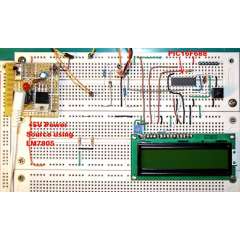
Posted August 4, 2013 by Chris
“This project will describe how to make a simple digital voltmeter (DVM) using a PIC16F688 microcontroller. The range of this DVM is 0-20V, but you can easily increase or decrease the range of input voltage as your requirements after you understand the voltage scaling method described in this project.”
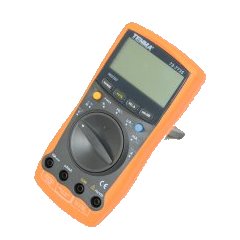
Posted April 9, 2013 by Chris
“In this article we will take a close look at the Tenma 72-7737 digital multimeter. Specifically, we’ll test out some of the more important functions of the multimeter, we’ll take a look inside to see what drives the multimeter, we’ll test out the PC interface and we’ll draw some conclusions based off of the overall experience.”

Posted February 15, 2013 by Chris
“The oscilloscope simulation shown on this website is based on the HAMEG HM203-6 20 MHz oscilloscope of Hameg GmbH in Frankfurt/Main, Germany. The HAMEG HM203-6 oscilloscope only was the inspiration for developing the simulation, because it is very well suited for this purpose.”







